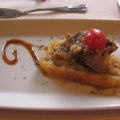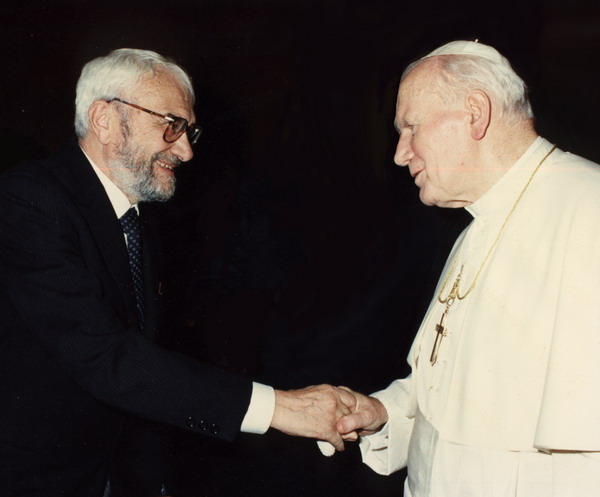You’ve probably heard about the “Mediterranean diet”, and know that it involves a lot of carbohydrates, olive oil, tomatoes, and other fresh vegetables, as well as lots of good red wine.
So what does a typical Italian meal look like? A restaurant meal may involve up to four courses: an antipasto, primo (first course), secondo (second course), and dessert. The antipasto and dessert are optional and often skipped, but to make a comfortably full meal you’re likely to want both the first and second courses. The first course is where you get the bulk of your carbohydrates, in a dish of pasta or rice (in the form of risotto).
A word about pasta: I have occasionally (reluctantly) eaten in trendy Italian restaurants in the US, at the behest of colleagues who thought it would be a treat for me. I do appreciate their kind intentions, but… It’s positively alarming what Americans will do to pasta! No matter what the menu claims, any single pasta dish that involves too many ingredients (sun-dried tomatoes, olives, tomato sauce, artichoke hearts, etc.) is not likely to be an “authentic” Italian dish. Furthermore, Italians don’t eat much chicken, and I have never seen an Italian put chicken in pasta. And feta cheese, being Greek, is not typically found in Italian pasta dishes.
…where was I? Ah, yes. The second course is where you get your proteins. It usually consists of meat or fish, very simply prepared, for example grilled over a log fire. You will also want to order one or more contorni (side dishes), such as vegetables, salad, or potatoes, since the meat usually arrives completely unaccompanied.
If you’re vegetarian, there’s not a lot of choice at most restaurants, but grilled scamorza (smoked cheese) and grilled vegetables are often available, and always yummy. There are some traditional vegetarian dishes such as melanzane alla parmigiana (eggplant parmesan) but, if you are a very strict vegetarian, you should ask, as often apparently vegetarian dishes do involve meat, e.g. a risotto with mushrooms will likely be cooked in meat broth.
Italian cooking is mostly very simple. It doesn’t need to be elaborate, because the basic ingredients are so good that it would be a shame to cover up the foods’ inherent flavors with heavy sauces and spices.
You can also have a cheese course after the second course, then dessert and/or fruit, then coffee. Coffee is not served with the dessert unless you specifically ask. Caveat: ordering a cappuccino after dinner is the sure mark of a tourist (if the waiter offers it, you’re in the wrong restaurant!). Italians rarely drink cappuccino after 10 am, and never after a meal.
A friend in Milan on business went alone to a restaurant for dinner. He overheard the couple at the next table – clearly Americans. When he answered his cellphone, they realized that he, too, was American, so they said hello. “The food is good here,” they said, “but the servings of pasta are really small!”
Yes, portions are small in Italy. Or, from the European point of view, portions in America are enormous! (And Europeans often add: “No wonder so many Americans are fat!”) That’s why in Italy you generally order a first course and a second course, as well as side dishes. A meal made up of a single course is called piatto unico (single plate), but these are not common.






